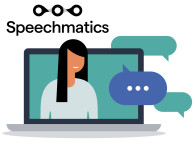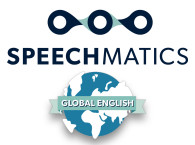
"While we may be the first speech technology company to do away with specific English dialects models completely, our expertise has proven that Global English is the right way to drive change in the market," Speechmatics states in the announcement.
The significant accuracy improvement for Global English means Speechmatics will now have one English language model supporting all major accents and dialects. Removing the need to use multiple languages packs for English dialects means that companies adopting the platform will benefit from simplified deployments as well as a reduction in the overall footprint. In turn this reduces the overhead costs for those licensed implementations, regardless of application or use case.
According also to the company, development for these Next Generation language models was based on several factors – refinements to its existing technology, deployment of entirely new machine learning algorithms, and extending and enhancing the use of data resources. The significant accuracy improvement for Global English means Speechmatics will now have one English language model supporting all major accents and dialects.
The Next Generation languages update is applicable across all use cases, from subtitling news reports, to transcribing meetings, to flagging potential customer issues within a call centre. Speechmatics also expects to continue to provide regular improvements to their core language offering.
“We’ve analyzed the market-leading quantity of data we have on this and, while we may be the first speech technology company to do away with English dialects completely, our expertise has proven that Global English is the right way to drive a shift change in the market and our Next Generation languages update supports this. By continuing to innovate and stay ahead of our competition with regards to accuracy, we will remain a leader in this field,” says David Pye, Head of Speech at Speechmatics.
“Our innovation in machine learning means we can make big jumps in advancing speech recognition technology, including dialect-agnostic speech recognition. We’re doing away with specific dialect language models for English as our modeling is now so advanced we no longer need them,” adds Pye.

The testing done with Speechmatics's customers to date shows the team has made double-digit improvements in accuracy using Global English and the Next Generation language models, meaning many of the core languages offered by Speechmatics are better than competitors in the field.
As Hewson Maxwell, Head of Technology, Access Services at Red Bee Media, states, “At Red Bee Media, we systematically assess ASR solutions in order to know we are using the best ASR for the job. We’ve been really thrilled to have seen an average of 22% improvement in accuracy using the new Speechmatics’ Next Generation models across all our core languages, on top of the already excellent base. These improvements will allow us to produce more subtitles for less and we are fast-tracking the new models in to production as fast as we can.”
The Speechmatics Next Generation language models is now available on the company's website.
www.speechmatics.com






